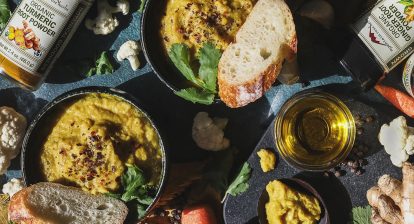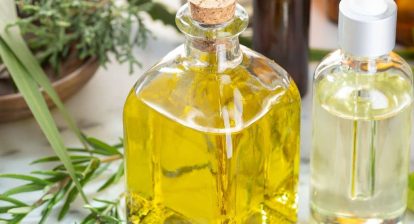Varicose veins, often associated with the aging process, are making an unexpected appearance in the lives of young people. Understanding the dynamics of this phenomenon is crucial for the health of the young demographic. This article aims to unravel the mystery surrounding the growth of varicose veins in young people. We will review the symptoms and risk factors associated with this condition.
Signs and symptoms
Surprisingly, varicose veins, usually associated with aging, appear more and more in the lives of young people. This challenges the common association of this condition with advanced age. Also, contrary to popular belief, varicose veins are not always visible on the surface. Let's delve into the symptoms associated with varicose veins in young people.
Visible Indications: More than meets the eye
Swollen and twisted veins are a hallmark of varicose veins. However, they may not always be visible in young people. Often, more subtle indicators appear, such as:
- Persistent swelling of the feet, especially after long periods of standing or sitting
- whitening or redness around particular veins
These conditions can be an early signal that requires attention.
Uncommon but important: Pain and discomfort
Varicose veins can go beyond the visual field. They can cause discomfort that can be mistakenly attributed to other factors. Pain or throbbing sensation in the legs, especially after prolonged inactivity, may signal the presence of varicose veins. Young adults should pay attention to restlessness, which can be an early warning sign of underlying vascular problems.
Skin changes and itching: Should not be ignored
Changes in skin texture around the affected veins should not be neglected. Some of the changes that may be indicative of varicose veins include:
- dryness
- scratching
- Feeling of heaviness in the legs
Young people experiencing these symptoms should consider them signals to seek medical advice.
Causes and risk factors discovered
Recent medical findings challenge the idea that varicose veins are exclusively related to aging. Age can indeed be a contributing factor. However, the sudden increase in younger people treatment of varicose veins requires further investigation.
Genetic predisposition appears to be an important player in this surprising increase. People with a family history of varicose veins are susceptible at an earlier age. This sheds light on the hereditary aspect of this vascular condition. Beyond genetics, lifestyle factors are coming into the limelight.
The influence of lifestyle on vein health
The contemporary lifestyle embraced by many young people is characterized by:
- Prolonged periods of sitting
- Sedentary leisure activities
- Bad dietary habits
This lifestyle has been identified as a major contributor to various health problems. Lack of physical activity can hinder proper blood circulation, increasing the risk of vein-related problems.
Poor nutrition, especially diets lacking in fiber, can contribute to weight gain extra pressure on the veins. The combination of a sedentary lifestyle contributes to the development of varicose veins. This occurs at an earlier age than traditionally expected, exacerbated by dietary choices.
Addressing Environmental Factors
Beyond genetic and lifestyle influences, environmental factors, such as exposure to toxins, may also play a role. Ongoing research raises intriguing questions about how our environment affects vascular health, especially in younger demographics.
Lifestyle factors
The impact of lifestyle choices on vein health is paramount. This is especially true for the treatment of varicose veins in the younger years. Beyond genetic predisposition, understanding how daily habits contribute to varicose veins is essential for effective prevention. Let's explore the various lifestyle factors essential to this sudden vascular phenomenon.
Dietary Choices: Beyond Calories and Nutrients
Diet is a cornerstone of overall health and its impact extends to vein health. A diet rich in fiber helps with weight management and supports proper digestion and absorption MOVEMENT. Include the following foods to reduce the risk of developing varicose veins:
- Fruits
- Vegetables
- Whole grains
Physical activity: the antidote to sedentary habits
Modern lifestyles often involve long periods of sitting, whether at desks or during leisure activities. Fighting sedentary habits is crucial to maintaining healthy blood circulation. Regular physical activity promotes blood flow and strengthens the muscles that support the veins. Engage in the following exercises to mitigate the risk of varicose veins:
Hydration: A simple but impactful habit
Adequate hydration is a simple but often overlooked aspect of vein health. Water supports circulation and reduces the strain on the veins. Youth are encouraged to maintain adequate hydration levels. This is a proactive measure against the development of varicose veins.
Fashion choices
Choosing shoes wisely is essential for individuals prone to varicose veins. Stylish high heels can complete an outfit. However, they can strain the calf muscles and obstruct blood circulation. Consider choosing shoes with lower heels. Better yet, choose supportive shoes that prioritize comfort without compromising style.
Choosing shoes that provide adequate arch support can contribute to maintaining vein health. Similarly, choosing loose clothing prevents unnecessary pressure on the veins. Comfortable clothing and shoes contribute to a healthier vascular system.
Practical tips for fashionistas
Different heel heights
If high heels are a must, consider different heel heights. This reduces prolonged strain on specific muscle groups and promotes a more dynamic walking pattern.
Regular leg movements
Incorporate leg movements into your routine, especially if your day involves prolonged periods of sitting. Simple exercises both ankle circles and foot tapping can encourage blood circulation.
Elevate your legs while resting
When you rest at home, lift your legs to reduce pressure on the veins. This simple practice helps return blood to the heart.
Travel Considerationsl
During long flights or road trips, take breaks to stretch your legs and get your blood flowing. Compression stockings it can be especially useful during long periods of travel.
CONCLUSION
Navigating varicose veins in the younger years requires a multifaceted approach. So for young people navigating varicose veins, remember that prevention and a positive mindset are your allies. Take your responsibility vein health and embrace the changes that empower you. Walk with confidence into a future where vein health and youth coexist harmoniously.







